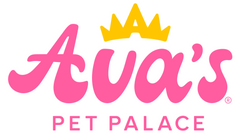Cost-Effective Alternatives to a Raw Diet for Your Pet
Switching to a raw diet for your pet can be a fantastic way to provide high-quality nutrition, but it’s not always feasible for every pet parent. The cost can add up quickly, and you may not feel comfortable making the switch without extensive research. Fortunately, there are alternative, cost-effective options that can still give your dog or cat many of the benefits of a raw diet. Here are some great alternatives to consider:
1. Freeze-Dried or Dehydrated Foods
Why it’s a good option:
Freeze-dried or dehydrated pet foods offer many of the same benefits as a raw diet, but they’re typically more affordable and easier to store. These foods undergo minimal processing, which helps preserve the nutrients found in raw ingredients. Plus, freeze-dried and dehydrated foods are shelf-stable and often rehydrated before serving, making them convenient.
Benefits:
- Maintains high nutritional value, similar to raw.
- Easier to store and handle than raw food.
- Long shelf life.
Tip: You can also use freeze-dried treats like our Lamb Munchies as meal toppers to boost your pet's regular food with extra nutrients!
2. High-Quality Kibble with Raw or Fresh Toppers
Why it’s a good option:
While feeding exclusively raw may be too expensive or complex, you can enhance your pet’s regular kibble with raw or fresh toppers. By adding fresh meat, eggs, or freeze-dried organ meats, you can elevate the quality of their meals without the full commitment to raw feeding.
Benefits:
- Adds extra protein and nutrients.
- More budget-friendly than an entirely raw diet.
- You have control over the portion and frequency of raw additions.
Tip: Adding lightly cooked or raw eggs, sardines in water, or plain yogurt are great, inexpensive toppers that can improve your pet’s diet.
3. Cooked Homemade Meals
Why it’s a good option:
If you’re uncomfortable with feeding raw but want control over your pet’s diet, homemade cooked meals are an excellent option. By preparing food in your own kitchen, you can ensure that your pet gets fresh, high-quality ingredients. You can find many cost-effective recipes online that focus on meat, vegetables, and grains, and adjust them to your pet’s needs.
Benefits:
- You control the ingredients and portion sizes.
- Less risk of bacterial contamination compared to raw.
- Budget-friendly and adaptable based on seasonal produce or sales.
Tip: Be sure to work with your vet to ensure you’re meeting all of your pet’s nutritional needs when cooking homemade meals.
4. Rotational Feeding
Why it’s a good option:
Rotational feeding involves varying your pet’s diet by alternating between different high-quality foods. This can include a mix of kibble, freeze-dried foods, and fresh toppers. By switching things up, you can provide a broader range of nutrients and flavors, keeping your pet interested in their meals while helping avoid food sensitivities.
Benefits:
- Prevents boredom and picky eating.
- Offers a more balanced range of nutrients over time.
- Cost-effective when you alternate between premium and budget-friendly options.
Tip: Slowly introduce new foods to avoid digestive upset, and rotate between protein sources like chicken, beef, and lamb.
5. Incorporate Fresh, Whole Foods
Why it’s a good option:
Even if raw feeding is out of reach, you can still boost your pet’s diet by incorporating fresh, whole foods like vegetables, fruits, and lean meats. These additions can be mixed with kibble or used as treats to offer extra nutrition and variety. Foods like carrots, blueberries, and sweet potatoes are nutrient-rich and affordable.
Benefits:
- Increases the nutritional content of your pet’s diet.
- Provides variety and enrichment during mealtime.
- Simple and cost-effective to incorporate.
Tip: Always check that the fresh foods you’re offering are safe for dogs or cats. Avoid toxic foods like onions, grapes, and garlic.
6. Supplement with High-Quality Treats
Why it’s a good option:
Another way to give your pet a boost in nutrition is by incorporating high-quality treats into their diet. Single-ingredient treats, like our Salmon Puffs or Turkey Poppers, can offer the benefits of raw feeding, such as high protein and minimal processing, but without the complexity of a full raw diet.
Benefits:
- Adds extra protein and nutrients in a controlled way.
- Affordable and easy to incorporate.
- Encourages healthy eating habits.
Tip: Use these treats as rewards or sprinkle them over kibble to enhance the flavor and nutritional value of your pet’s meals.
Switching to a raw diet may not be realistic for every pet parent, but there are plenty of ways to improve your dog or cat’s nutrition without the full commitment to raw feeding. By incorporating fresh foods, freeze-dried options, and homemade meals, you can still give your pet many of the benefits of raw at a more affordable price. As always, it’s important to consult with your veterinarian when making changes to your pet’s diet to ensure they’re getting everything they need for a healthy, happy life!
Check out our Tiktok or IG post featuring the meal in the thumbnail!

